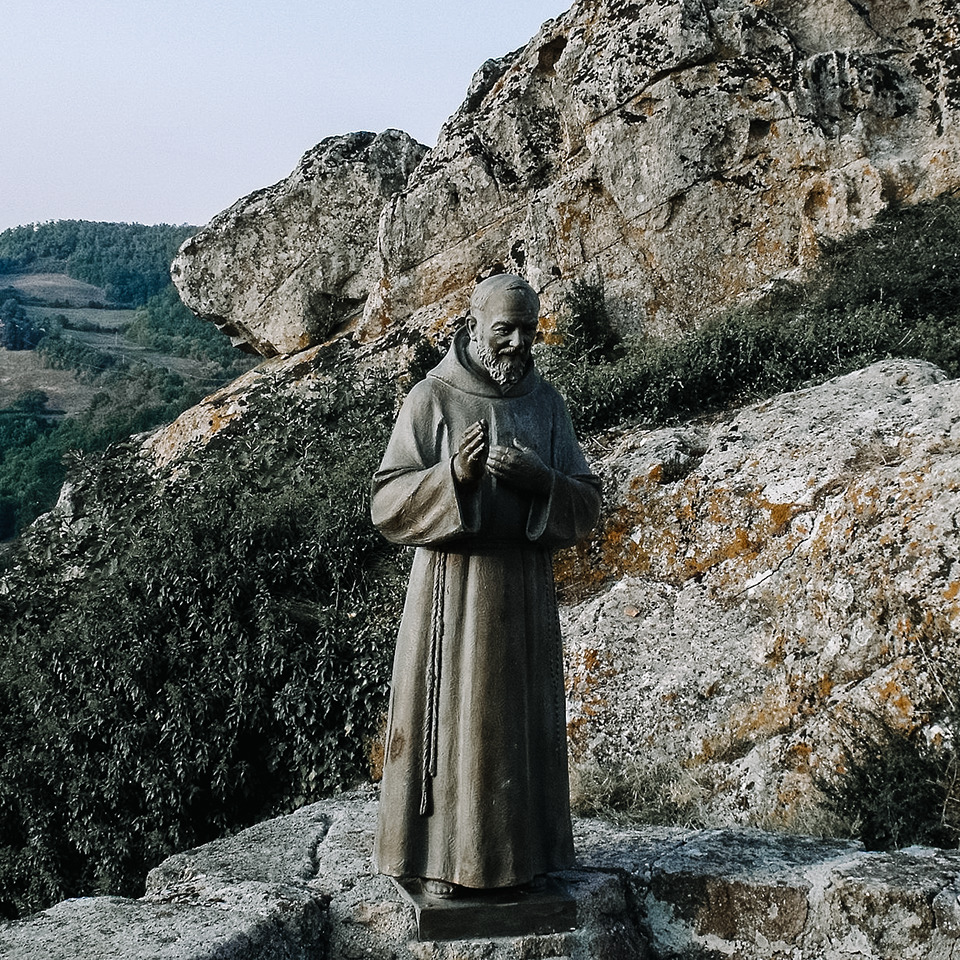There is a text that has become standard for the study of religious experience and phenomena by Rudolph Otto entitled The Idea of the Holy.
In this book, Otto uses the phrase tremendum et fascinans (roughly translated as “fear and fascination”) to indicate what it means to encounter sacred realities. The sacred, be it a place, person, or thing, can evoke the frightening but still remain attractive and compelling. The holy is terrifying, yet at the same time, irresistible.
I have always found Padre Pio to be a kind of embodiment of Otto’s principle. The Church celebrates Saint Pio of Pietrelcina today, September 23.
Francesco Forgione was born in rural Italy in the year 1887. Even as a child, he claimed interactions with the Lord Jesus and the saints, and he was perplexed to hear that other children were not, as he was, able to communicate directly with the Lord and the citizens of heaven. As a young man, he professed vows as a Capuchin and was given the name “Pio.” He spent many of his early years with the Capuchins afflicted with poor health. In 1918, he received the stigmata, which is a mystical participation in the suffering of Christ that displays itself in actual wounds, making the recipient a kind of living representation of the crucified Christ.
It is also reported that Padre Pio had the capacity for clairvoyance, bilocation, and the power to heal. There are many stories of Padre Pio’s miraculous interventions.
Of course, such a person will attract attention—and Padre Pio not only attracted attention, he attracted crowds. Multitudes descended on his friary. His legacy still resonates throughout Italian culture.
He is both fascinating and frightening.
I first discovered Padre Pio when I was in the third grade. A film about the holy man was shown to our class. My introduction to the saint was also my earliest remembered experience of tremendum et fascinans. For some reason, my limited capacity to understand precisely what a stigmata was led me to believe that somehow it was a contagious condition. When I begged the question of my mother as to whether or not one could “catch” the stigmata, she gave me a look that communicated not only bewilderment but wonder as to what precisely her children were being taught in Catholic school.
St. Pio of Pietrelcina is a fascinating kind of saint, but also a bit frightening. He represents very well that our encounter with the supernatural is not an experience that we can easily comprehend or control. The faith, which is, at its sacred center, a holy meeting with the mystery of the living God, is not something that can be domesticated or made easy. Nor is religious experience something that reduces itself easily to the standards of modern rationalism. In Jesus Christ, God not only takes on our flesh, but he also becomes, in his Incarnation, peculiar and strange. As the Gospel of Mark notes, the encounter with the Lord left people “amazed and afraid” (Mark 10:32). Attempts to sentimentalize how God presents himself to us in Christ and his saints inevitably falter and fail. God is not controlled by who we think he should be or what we think he should do. Our freedom is contingent. God’s freedom, though always directed by his nature—which is good—is radical. An encounter with the Lord will inevitably draw us out of what is predictable and safe. Only when we accept this do we truly progress in the spiritual life.
May St. Pio of Pietrelcina intercede on our behalf and help us to accept that the ways of the Lord are mysterious, always fascinating, and at the same time, evoking a holy fear that has the power to transform and redeem.
This piece was originally published on September 23, 2016 in the Word on Fire Blog.
